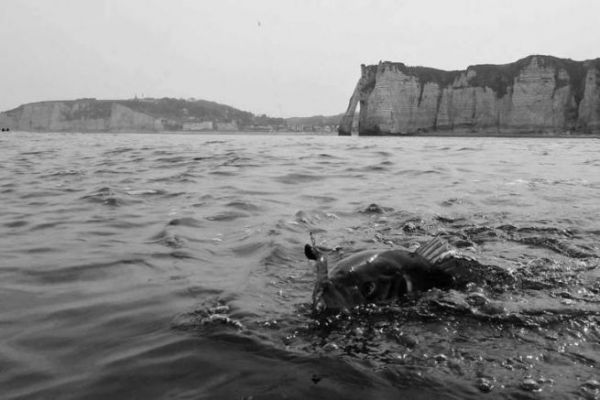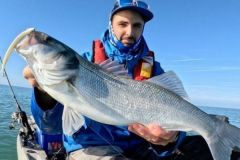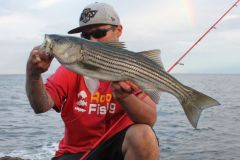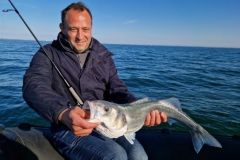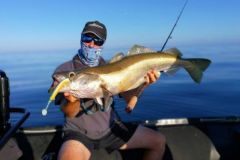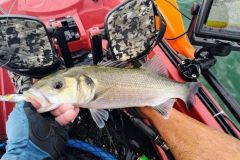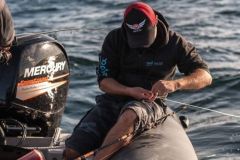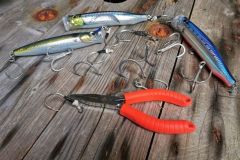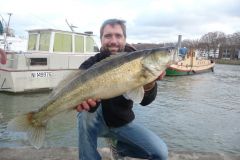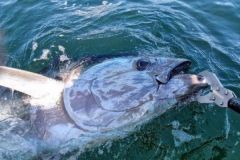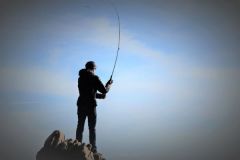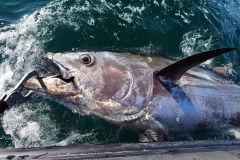Discretion first
The first rule when spotting a hunt is discretion. How many times have you seen a hunt disappear as quickly as it came? Sea bass are very sensitive to disturbance and sound vibrations. Arriving in the area at high speed can spook the fish and end the hunt in a matter of seconds. So reduce your speed well before reaching the area and approach gently to avoid making waves, and keep motor noise to a minimum.
Bypassing the hunt
Instead of heading straight for the chase, go around it to position yourself strategically. Observe the direction of the current and position yourself, engine off, so that the current takes you towards it. This approach avoids disturbing the fish and increases your chances of catching them. Take your time to observe the situation before casting your lures.
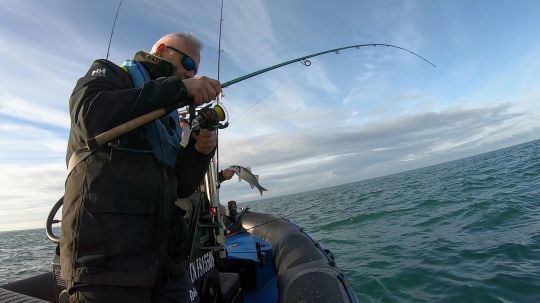
Choosing the right depth
Hunting can occur at different depths. It's essential to exploit the layer of water where bass are most active. If the hunt takes place in open water, try fishing at different depths to find where the bass are concentrated. Use your depth sounder to spot schools of forage fish and adjust your strategy accordingly. Remember, too, that the bigger, smarter fish are sometimes well below the war zone to feed effortlessly. Always test this zone.
Choosing lures
The choice of lure is crucial. Use soft lures or swimbaits adapted to the depth and behaviour of bass. For example, lures with a short lip for the surface or a large lip for deeper waters. Donâ??t hesitate to vary lures to see what works best in the given situation. Absolutely avoid surface lures âeuros even if they are tempting âeuros as you risk catching âeuros and injuring âeuros one of the hunting birds.
Personally, on a bass hunt, I like to start with a small 10 to 20 g jig. It allows you to cast far and fast into the water and explore every depth without wasting time.
Observing nature's signs
Be on the lookout for natural clues that may indicate the presence of schools of forage fish, and therefore of hunting bass. The presence of birds or other predators such as dolphins can be excellent indicators. Use these signs to anticipate fish movements and adjust your position. Because bass move so fast, there's a good chance you'll lose her at some point... And come out again at 200 m. Be agile, fast and discreet. Hopefully, the other boats will be too.
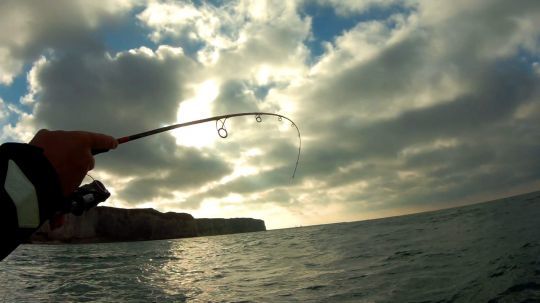
In short, bass fishing on the hunt is an exciting experience that requires luck (even if they often occur in the same places), observation and strategy. By following these tips, you'll increase your chances of success and make the most of these intense moments. Don't forget that every outing is an opportunity to learn and improve. Enjoy yourself while respecting nature and the fish!

 /
/ 